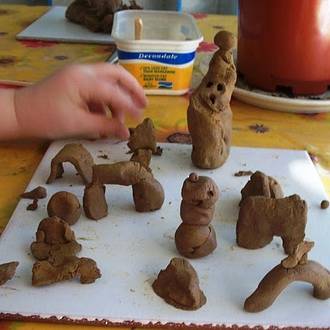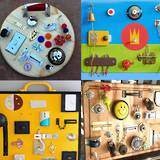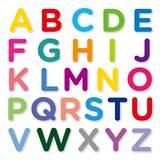9 Benefits of playing with clay
|
Clay is very versatile and there are so many ways toddlers and preschoolers can play and experiment with it. Clay gives them the opportunity to be creative and learn about texture, shape and form whilst having lots of fun. Check out some of the other benefits.
|
You might also be interested in ...
Make your own sensory board
A sensory board or busy board is a fun, hands-on activity for babies and toddlers to help them touch, explore and learn about different objects all in one place. They have lots of developmental benefits too and are really easy to make at home with things you have to hand.
Teaching preschoolers the alphabet & letters
Being able to read is a vital life skill, so make the early stages of learning the alphabet as fun as possible for your preschooler. Preschoolers learn and develop best through using their whole body, all of their senses and their natural environments. You’ll find that most preschoolers begin to recognise letters when they’re about 2 to 3 years old, and are able to identify a large number of letters between 4 and 5 years old.







Clay gives them the opportunity to be creative and learn about texture, shape and form whilst having lots of fun.
9 Benefits of playing with clay
1. Manipulating clay helps toddlers and preschoolers to develop their hand and eye co-ordination as they pound, pat and push the clay into shapes and objects.
2. Clay also helps toddlers and preschoolers develop the small muscles in their fingers and hands, known as fine motor skills, as they pinch, squeeze and prod the clay, adding detail to the shape or object.
3. Through this manipulation, toddlers and preschoolers can express their thoughts and ideas as they mould the clay to take on the form of their imagination.
4. Toddlers and preschoolers can experiment with literacy and numeracy concepts as they use clay to create letter, number and shape formations.
5. Facilitating toddlers and preschoolers to create their own name, their age, street address, or the names of people in their family makes learning meaningful.
6. Clay can also be used to visually represent your toddler's or preschooler's culture as it is moulded to represent meaningful symbols and patterns.
7. You can support your toddler or preschooler with clay play by providing an unhurried, spacious environment so that time can be spent developing and revisiting their work.
8. Regular access to clay provides toddlers and preschoolers with opportunities to build on their knowledge, verbalise their thoughts and ideas, and add detail to their work.
9. Skills toddles and preschoolers develop when playing with clay include imagination, perseverance, problem solving, teamwork, social interaction and self- regulation.
Clay tips
More kids activity articles to enjoy:
Source: This article was written by Nurtured At Home - providing high quality learning environments in a safe and nurturing home.
Image source: letthechildrenplay.net